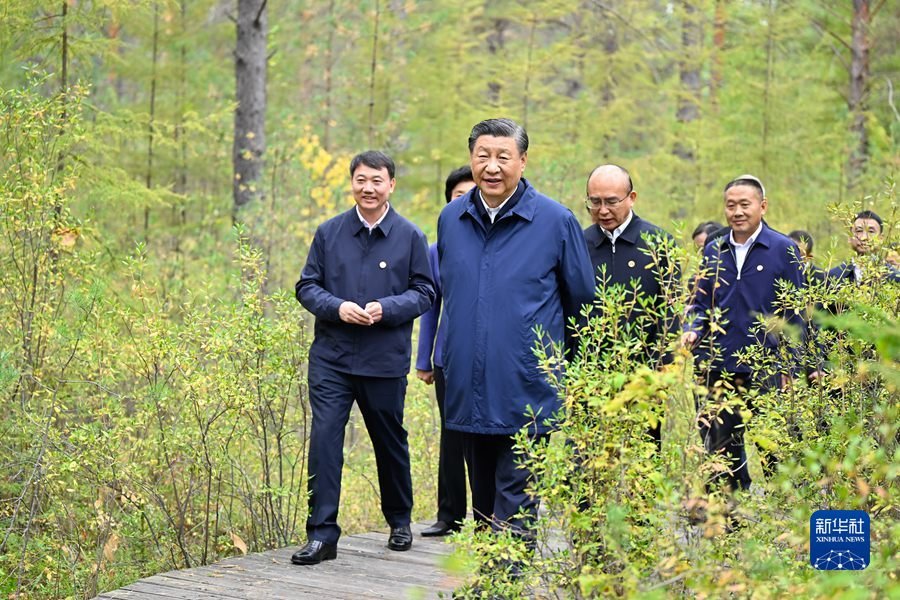Chinese President Xi Jinping, in a recent visit, highlighted the crucial role of Heilongjiang province in the overarching development strategy of China. Over a three-day inspection, from Wednesday to Friday, Xi elucidated the multifaceted significance of the province not just in China’s present but also in charting its future.
The Rationale Behind Xi’s Focus on Heilongjiang
Heilongjiang, with its distinct geographical, agricultural, and industrial attributes, holds a unique place in China’s development puzzle. This emphasis is rooted in several key factors:
- Commodity Grain Production: Heilongjiang is envisioned as a cornerstone in ensuring the nation’s food security. Xi advocates for the province to evolve as an indispensable national commodity grain production base, which would play a pivotal role in feeding China’s vast population.
- Equipment Manufacturing and Energy Production: The province’s potential in heavy equipment manufacturing, along with its role as a primary energy and raw material supplier, is expected to further solidify China’s industrial foundations. These sectors can act as catalysts in driving China’s ambition of becoming an industrial powerhouse.
- Ecological Security: Heilongjiang, bearing the mantle of the guardian of ecological securityin northern China, has a significant role in protecting the environment. With rising global concerns over climate change and sustainability, this responsibility gains even more prominence.
- Gateway for International Engagement: Its position makes it a strategic gateway for the nation’s northern endeavors, paving the way for broader international cooperation and diplomacy.
Xi’s comprehensive vision for Heilongjiang is to convert these inherent strengths into palpable developmental momentum.
Xi’s Interaction with the Ground Reality
The president’s visit wasn’t just about policy dictations; it was also about understanding the ground realities, reflecting his hands-on approach.
In the serene backdrop of a forest farm in Mohe, nestled in the Dahinggan Mountains, Xi championed the philosophy of balance. He emphasized that afforestation and forest protection should march hand in hand. The underlying message was clear: while we harness nature, we must also respect and protect it. This resonates particularly when considering the potential hazards which could potentially erase long-standing achievements in the blink of an eye.
Further north, at the Beijicun or “North Pole Village,” which stands as a testament to China’s northern extremities, Xi accentuated the symbiotic relationship between humans and nature. He advocated for green initiatives that not only ensure ecological preservation but also economically uplift the local populace. Here, the role of tourism, especially leveraging the scenic beauty and unique snow and ice landscapes, can be an economic boon for the residents. Xi emphasized that such resources should be channeled to enhance the economic prospects of the local community.
Addressing Post-Disaster Rehabilitation
Xi’s concerns were not just limited to economic and ecological advancement; they also encompassed humanitarian aspects. With recent floods wreaking havoc in several parts, Xi made it a point to visit a severely affected village in Shangzhi City. His primary concern was to assess the aftermath and the ongoing recovery efforts.
The President’s observations were reassuring. Witnessing the progressive reconstruction and the restoration of daily life instilled confidence in the resilience of the people and the efficacy of the local governance. However, he stressed the need for comprehensive planning to ensure that those affected could navigate the upcoming winter safely.
Xi’s directive to local authorities was unambiguous. He advocated for meticulous planning, leaving no stone unturned, to ensure the well-being of the citizens. This covered all facets of life, from food and shelter to employment and health. Accelerated post-disaster reconstruction was on top of his agenda, underlining the need to minimize agricultural losses and ensuring relief and security for the victims.
Education as a Pillar of National Development
Xi’s visit to Harbin Engineering University exemplified his emphasis on education. Recognizing the university as a cradle of future innovators, he spotlighted the crucial role of education, science, technology, and talent in sculpting China’s future.
He envisioned China not just as a participant but as a leader in these domains. His call was for the academic and research communities to strive for excellence and make China a frontrunner in these sectors.
In a heartwarming gesture, acknowledging the upcoming Teachers’ Day, Xi extended his warm wishes to the faculty of the university and teachers nationwide, recognizing their pivotal role in molding future generations.
Conclusion
President Xi Jinping’s visit to Heilongjiang was more than a mere formality. It was a deep dive into understanding the province’s potential, challenges, and its strategic importance in the grand Chinese narrative. Through this visit, Xi has set the tone for Heilongjiang’s future, emphasizing its multifaceted role in China’s march towards comprehensive development.
Read More:
